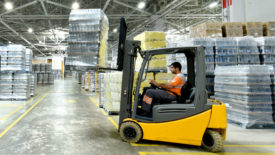Commentary
Distribution
Fleets wired can be vulnerable can take steps to protect against cybercriminals
Read More
Beverage Beat
Innova details strategies for development of healthy beverages
Holistic approach to health gaining traction with consumers
July 19, 2022
Operations Perspective
The transitions of containers, closures
Changes to packaging result in far-reaching impact on operations
July 18, 2022
Robotic palletizers, depalletizers enhance worker safety, increase efficiency
Craft beer, energy drinks driving need for automated palletizing operations
June 30, 2022
Distribution
Pandemic prompts fleet managers to rethink long-term operational practices
Parts, staff shortages alter how fleet managers approach operations
June 30, 2022
Operations Perspective
The interface of manufacturing and marketing
Team efforts vital when deciding product, packaging changes
June 20, 2022
Beverage Beat
IRI names 2021 New Product Pacesetters
Beverages account for 6 of Top 10 in food, beverage category
June 17, 2022
Distribution
Electric vehicle charging infrastructure is expanding rapidly across the United States
EV charging stations and other infrastructure get government boost
June 1, 2022
Operations Perspective
The conditions and applications impacting utilities in beverage operations
Water remains most important utility for beverage facilities
May 27, 2022
Beverage Beat
Beverage suppliers support consumers’ sustainability goals
OnePoll survey shows recycling top sustainable habit parents instill with children
May 17, 2022
Elevate your expertise in the beverage marketplace with unparalleled insights and connections.
Join thousands of beverage professionals today. Shouldn’t you know what they know?
JOIN NOW!Copyright ©2024. All Rights Reserved BNP Media.
Design, CMS, Hosting & Web Development :: ePublishing










